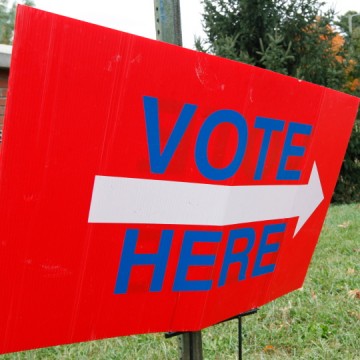Publicly Funded Elections Should Treat All Oregonians Equally
Monday, October 13, 2014
Former Secretary of State Phil Keisling and voter rights advocate Caitlin Baggott, GoLocalPDX guest MINDSETTERS™
 |
| Photo credit: iStock |
It’s about voting.
This year, Oregonians will vote up or down to grant more than 650,000 taxpaying voters the right to have a say in their state and federal representation. They are currently barred from participating in the election that matters most: the spring primary. A recent Oregonian study showed that nearly 90 percent of those races are effectively decided in the primary – leaving a small number of contested races for the fall ballot in a spare handful of districts around the state.
Why have these 650,000 voters been locked out? Because they choose not to sign up with the big political parties.
Who hates this proposed change? The big political parties.
And also electioneers who hew to the success of one party or the other. Right to Life and Planned Parenthood are together on this one: They say vote no.
Hence the agitation.
Ideals of democracy
Measure 90 fulfills one of the most basic ideals of our democracy: All voters should be treated equally regardless of their creed or ideology.
If that seems straightforward, that’s because it is.
Here’s what the Top Two primary would do, from the perspective of voters: Every Oregon voter would get the same ballot. The universal ballot would include every candidate for all state and federal offices.
The information voters turn to most frequently to make their choice – party affiliation – would be provided in far more detail than we receive now. Each candidate would be listed with his or her personal party registration, and also any endorsements he or she chooses to accept.
A whimsical example, from inner SE Portland, where both of us happen to live:
- Rosy Riveter (Democratic Party). Endorsements – Democratic Party, Working Families Party, Progressive Party
- Johnny Appleseed (Pacific Green Party). Endorsements – Pacific Green Party
- Cool H. Luke (No Party). Endorsement – Libertarian Party, Independent Party
- Donna Quixote (Republican Party) – Republican Party,
The two top vote-getters in that election would go to the fall ballot. For the sake of argument, let’s guess that Rosy and Johnny are the favored candidates in this lefty district.
As in 11 districts in Washington state this year, a minor party candidate would appear as one of two finalists -- and thus, have a very real chance to win the election. (No minor party candidate has won any Oregon partisan election in nearly a half century.) Washington has used a version of the Top Two primary for a few election cycles now. In a recent survey, 76 percent of Washington voters prefer the “pick-a-candidate” system over the “pick a party” system.
A real choice
But perhaps more importantly: Regardless of which two candidates proceeded, all voters would have a choice in the spring – and far more voters would have a real choice again in the fall. In Portland, this is the way we elect the mayor, city commissioners, county commissioners, and Metro councilors. (With one key difference – under Top Two there would always be two candidates on the ballot in the fall.)
Caitlin is a nonaffiliated voter, like 49 percent of those under age 40. She has no choice in the spring ... and a choice between a predetermined winner (the Democrat) and assorted wishful thinkers in the fall.
Phil, a Democrat, can only choose among Democratic candidates – even if in this race he favors a candidate of a different party. He could theoretically register with that other party, but then he could only choose candidates of that party up and down the ticket. In the fall, he’s in the same boat with Caitlin.
In our district, as in the majority around the state, the fall election is a walk to the finish line for candidates with strong partisan support.
From a voter’s point of view the Top Two primary treats all voters equally, gives us more choice, and is simple because it’s the way we already vote for many candidates.
But if you look at the election from the perspective of an electioneer, rather than a voter, it looks quite different. Measure 90 would change the rules for those who run elections – rules they’ve built strategies around for many years. The opposition’s arguments against the measure boil down to a phrase we’ll borrow from the head of one advocacy organization who used these words precisely: “It would dilute our power.”
As people who have run advocacy organizations and campaigns, we get it. The fight to win is about survival. If you strongly believe that you are on the correct side of the moral compass – as both Planned Parenthood and Right to Life, and both the Democratic Party and the Republican Party believe – it feels ethical to desire an election system that will support your win at all costs.
Oregon cannot afford to calibrate our democracy toward those who seek to be the victors. In that world, voters are the ones who lose.
We invite you to join us – Oregonians from across the state who believe in making every vote count and want to see government reformed, including Gov. John Kitzhaber and state Rep. Dennis Richardson, the major party candidates for governor; the 100,000-member Independent Party of Oregon, Working Families Party, the Oregon Business Council, and many others – in voting Yes on Measure 90.
When 650,000 people are blocked from participating in the election that decides 90 percent of outcomes, it’s time for a change.
Banner Photo Credit: iStock

